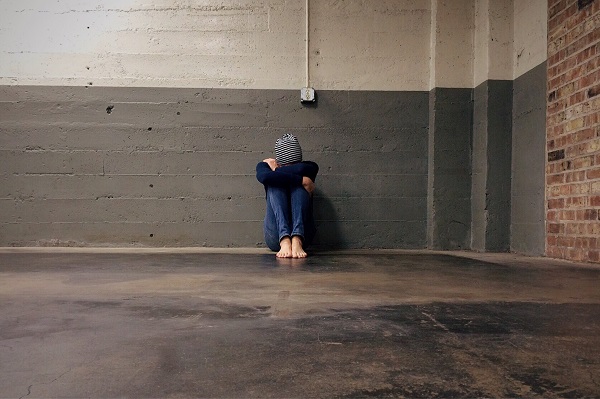The reasons that more women develop Fibromyalgia include, but are not limited to, the following physiologies and pathologies:
The women’s pelvic girdle is more delicate than that of the men, wherein bigger bones and more massive ligaments provide a stronger platform for the upright post of the spine and a stronger tower for lifting, pushing, and pulling.
Women are at greater risk for injury of the soft tissues, ligaments, tendons, muscles, and fascia, that maintain the integrity of their pelvic platforms. Unstable pelvic platforms induce scoliosis of the spine, which begets asymmetry of the shoulder girdles, which begets tilted heads.
All of these body tower asymmetries cause the soft tissues of the body to struggle to maintain a medical center of gravity; as the body confronts the ambient gravitational field.
Click here to Get this or Visit Fibromyalgia Store
Unlike men, women inherit a genetic predisposition to a tissue variant called Joint Hypermobility Syndrome (JHS). This biological circumstance imbues the women’s body with more flexible ligaments than the men body. “Double jointness” is the layman term for this tissue variation.
Fortunately, women have this trait because it helps to provide them with the ability to expand the pelvic girdle during the birthing process. Unfortunately, this tissue variant exposes the women’s body to greater degrees of permanent soft tissue injuries from mundane lifting and slipping accidents and also causes women to incur permanent pelvic girdle ligament injuries during the birthing process.
British physicians are more knowledgeable about JHS, and most American physicians have never heard of this normal tissue variant. A collection of medical papers about the subject has been edited by Dr. R. Grahame, and this 2010 book is entitled “Hypermobility, Fibromyalgia, and Chronic Pain“.
The women’s body secretes a hormone, Relaxin, at each men’s and during pregnancy. This hormone softens and loosens women’s ligaments, especially those of the pelvis, to prepare the women’s pelvis for childbirth. Over the years, each women’s ligaments are repetitively stressed by waxing and waning levels of Relaxin. Consequences to the integrity and stability of women’s bodies might be significant. I do not think that this issue of skeletal instability in response to Relaxin has ever been studied.
Women experience and tolerate more chronic pain than men. Monthly menstrual cramps, Irritable Bowel Syndrome, “Endometriosis“, and Migraines are only some of the functional afflictions experienced by women to a greater degree than men’s.
These Chronic Pain Disorders are caused by actual tissue dysfunctions, and behavioral changes noted in women when they are afflicted are a consequence of their disorders and not a cause of these disorders. Unfortunately, these disorders are soft tissue disorders, which are transparent to imaging studies. Additionally, there are no blood studies sensitive enough to mark the occurrences of these disorders.
As a result of modern conveniences, present-day women are less physically active than their “paleo–sisters“, to coin a phrase. Men’s on the other hand continue their paleo-hunter/warrior activities with the assistance of modern warrior vessels called boats and ATVs and in modern war games called “sports”; in addition to continuing to perform laborious lifting and pushing activities at their daily “jobs”.
Father Nature has fitted men with great muscle suites that inure their bodies against environmental assaults, and with robust ligaments that hold their joints and skeletons together.
Both men and women suffer mechanical accidents and falls. The men’s body is better equipped to get up and start over again and without permanent soft tissue injury. Both men and women incur temporary incapacitating injuries and illnesses. It takes only two weeks of inactivity to lose significant muscle mass. At the end of a period of inactivity, men have lost muscle mass, but they started with a greater reserve; thank you testosterone.
Autoimmune disorders such as Lupus, Rheumatoid Arthritis, and Multiple Sclerosis afflict women more than men’s, and for reasons known only by the Great Designer. These chronic pain disorders force many women into inactivity, with resultant loss of muscle mass and tone.
Click here to Get this or Visit Fibromyalgia Store
Chronic Pain, which is experienced by women more than men’s, is a profound disturber of restorative sleep. Loss of sleep generates daytime fatigue and disinterest in physical activities, which begets loss of muscle mass and tone. Loss of sleep causes mental depression and jumbles mental functions and cognition. Poor food choices and nutrient deficiencies can result.
This essay is not intended to be an exhaustive list of all the multiple factors that contribute to the multifactorial disorder called Fibromyalgia. What has been presented are some of the highlights of causality. Each Fibronik, to coin a phrase, comes to the disorder via an idiosyncratic pathway and a unique admixture of physiological insults. This writing is intended to explain the principles by which Fibromyalgia evolves.
Fibromyalgia is a condition of painful muscle spasms and ligament strains widespread throughout the body. Forget what you have been told about “brain plasticity” and “central sensitization“.
These are tired unproven theories with a few interesting imaging studies and substance P measurements that demonstrate that the brain and spinal cord are being barraged with a constant attack of pain signals generated in a myriad of painfully spastic soft tissues throughout the body. The exact tissues that hurt when you press on them. Da!
Fibromyalgia is a Chronic Pain Disorder caused by chronic repetitive stress. The chronic stressor is Gravity. Weak and spastic soft tissues struggling to hold the body tower upright in the face of Gravity are the true generators of Fibromyalgia pain.
A deconditioned and fragile women’s body with an unstable skeleton and wobbly pelvic girdle platform has a greater battle with Gravity than does the men’s body; even an injured men body.
Fibromyalgia is a disorder that begets itself. Injuries and illnesses cause pain and inactivity, which begets deconditioning, and increasingly weak and spastic soft tissues, which beget additional chronic pain, sleeplessness, and depression, which begets ……and so on. In the process, the Fibronik becomes more and more incapacitated.
Any Fibronik who doubts this explanation might do well to spend an hour in a floatation chamber and note the instant pain relief.
Indeed this is a gloomy scenario, but as with all medical disorders for which there are known causes, the causes suggest the cure.
Nutrition, aqua therapy, yoga, massage, acupuncture, Tai Chi, walking, weight loss if obese, mindfulness therapies, herbs, Cannabis, fresh nutrient-dense juices, and other natural therapies offer the pathway to heal from Fibromyalgia.

Click Here to Visit the Store and find Much More….
For More Information Related to Fibromyalgia Visit below sites:
References:
Fibromyalgia Contact Us Directly
Click here to Contact us Directly on Inbox
Official Fibromyalgia Blogs
Click here to Get the latest Chronic illness Updates
Fibromyalgia Stores









